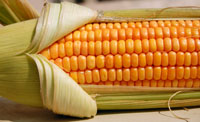
| Scientists Warn EPA About Ethanol GHGs | 24 March 10 |
 Two hundred scientists petitioned the US Environmental Protection Agency in September 2009 to look at indirect land use change as a major source of green house gas (GHG) emissions in the corn ethanol industry. New findings show corn based ethanol may be no better for overall emissions than regular gasoline. Two hundred scientists petitioned the US Environmental Protection Agency in September 2009 to look at indirect land use change as a major source of green house gas (GHG) emissions in the corn ethanol industry. New findings show corn based ethanol may be no better for overall emissions than regular gasoline.There has been criticism that corn ethanol is not as clean a fuel source as claimed. The industry has been lobbying to have investigators exclude emissions from land use changes when evaluating GHG released from the biofuel and to only count tail pipe emissions. However, the EPA found indirect emissions, mostly from land clearing, are a major source of heat-trapping pollution in the corn ethanol industry. Corn ethanol is increasing worldwide demand on food crops, promoting clearing of previously untouched land to grow new crops. These forests are a major carbon sink and clearing them to make a "green" fuel is counter productive. Experts are now advising that to meet the 2005 EPA Renewable Fuel Standards, fuels from grass, wood chips and other waste material are better options, but these other biofuels need technology that is not as advanced. View February 2010 EPA Lifecycle Analysis of GHG Emissions from Renewable Fuels (PDF)View March 12, 2010 Science Daily News press release View March 11, 2010 Science Daily News press release View February 3, 2010 Union of Concerned Scientists press release View March 30, 2007 CBC News press release View more information on Manitoba Wildlands' Addressing Climate Change page Sources: Environmental Protection Agency |
|
 Print version Print version |
Top |
